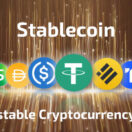Horizen (formerly known as ZenCash) is a privacy-oriented blockchain system built on zero-knowledge cryptography. It was rebranded from Horizen to ZenCash on August, 22nd 2018. Horizen uses leading-edge privacy technology to provide everyone with privacy and complete control of their digital footprint.
The platform enables several real-life uses beyond an anonymous token of value. It includes the ability to privately chat with users, securely publish information, and go anywhere on the Internet with complete privacy.
How Horizen Works
Horizen builds on the heritage of some of the best cryptocurrencies and distributed file sharing systems by incorporating existing and new features to create a network designed for long-term viability. Some of its foundations come from Bitcoin, Decred, Dash, Zcash, and Zclassic.
Zcash was meant to become an extension of Bitcoin with fully anonymous shielded transactions, but the fact that the founders of the project got 20% of all block rewards for the first four years caused a lot of dissatisfaction among its users. This lead to the creation of Zclassic, an open-source clone of Zcash that removed the founders reward.
Horizen is a fork of Zclassic with several additional features that improve the design and turn it into a fully encrypted blockchain with a sustainable funding and governance model that better aligns with Satoshi’s vision of a decentralized global community. It was forked from the Zclassic codebase on May 23, 2017.
Features of Horizen
– Equihash algorithm, which is a memory-hard, proof-of-work mining algorithm.
– The block reward is 12.5 ZEN, the block generation time is 2.5 minutes, and the block size is 2 MB.
– The network uses the Digishield V3 difficulty adjustment algorithm tweaked to use a modified trailing-average difficulty window.
– The PoW block reward and transactions are split between miners and other stakeholders as follows: 70% to miners, 20% to node operators, and 10% to the Horizen treasury.
– The block reward is halved every four years like Bitcoin.
– The total eventual coin supply is capped at 21 million ZEN.
– Transparent transactions that publish details like the sender, receiver, and the amount on the blockchain, and shielded transactions that obscure those details.
– Secure and super nodes that earn block rewards by maintaining the blockchain, ensuring all network communication is encrypted, and providing certificate-based encryption connections for Horizen wallet applications.
– Governance by one or more DAOs that handle the operations and continued development of the system.
Functional Elements
Horizen brings together many different elements to form a working whole. It combines a set of existing technologies and applications in an integrated functioning infrastructure secured by a network of economically incentivized nodes. The following components define Horizen’s basic functionality.
1. T_Transactions and Z_Transactions
Like Zcash, Horizen offers users selective privacy. Users can choose between traditional blockchain transactions (t_transactions) or shielded ones (z_transactions) to keep their activity confidential.
T_Transactions – A pseudonymous transaction address (‘t’ address) like the ones used by Bitcoin. T_transactions are derived from Bitcoin and enable rapid compatibility with wallets, exchanges, and other Bitcoin-derived ecosystem applications.
Z_Transactions – A completely private transaction address (anonymous ‘z’ address). Z_transactions are transactions sent to shielded addresses. The balance of a shielded address is always private but any funds transferred to a transparent address will be deshielded and the value received will be recorded on the blockchain. This is a feature Horizen inherits from Zcash and Zclassic.
2. ZenTalk
One of the inconveniences of using anonymous transactions is that they’re private to the point where no one knows who is sending what to whom, which forces users to use off-chain communication channels. Horizen’s solution is ZenTalk, a new type of secure communication network that uses the blockchain to permanently store messages.
With ZenTalk, users can securely send each other information before and after shielded transactions. The system encrypts and incorporates text-based messages into the blockchain alongside private transactions, enabling users can securely conduct commerce on Horizen without relying on third-party channels.
3. ZenPub
ZenPub is an anonymous document publishing platform that appends documents onto Horizen using IPFS or GNUnet. A user can use ZenPub to securely publish an IPFS or GNUnet address in the text field of a z_address. GNUnet is currently the preferred publishing system because it provides the required infrastructure for anonymous publishing and maintains an active database of documents.
4. ZenHide
Horizen uses domain fronting to bypass censorship in countries that are hostile to crypto-commerce. Domain fronting uses HTTPS to allow users to communicate with a forbidden host, while appearing to be communicating with a permitted host.
5. ZenNodes
Horizen uses a secure node system to enforce encrypted communication between nodes and protect the network against eavesdropping and man-in-the-middle attacks.
Horizen has two types of nodes: secure nodes and super nodes. Super node operators are required to stake a significantly higher amount of ZEN (500 ZEN) and have larger computation and storage requirements.
A node’s duties include maintaining the blockchain, validating miner solutions, accepting transactions from wallets, and acting as a decentralized computing and communications system for cryptocurrencies.
All nodes will maintain a basic standard of security and performance to keep the system distributed, resilient, and secure. Node-to-node communication is encrypted with TLS certificates and is further protected with Perfect Forward Secrecy (PFS).
Users who operate node software receive 20% of the block reward. This will be split evenly between secure node operators and super node operators. Detailed instructions on how to set up a Horizen node can be found here and a calculator for estimating monthly returns is available here.
Horizen vs. Zcash and Other Cryptocurrencies
A lot of privacy coins have come to the forefront in 2018, and Horizen shares similarities with many of them. Monero, Dash, Zcash, and Zclassic all promise to provide users with transactional privacy.
Dash and Monero
Dash implements PrivateSend to mix coins and obfuscate transaction details. Monero uses ring signatures to mix a sender’s input with a group of other users, making it difficult to establish the link between each subsequent transaction. These mixing mechanisms give users privacy by default, but they can’t offer users 100% anonymity.
Zcash and Zclassic
Zcash, Zclassic, and Horizen use zero-knowledge proofs (zk-SNARKS) to solve the privacy and fungibility problems of transactions on the blockchain. With zk-SNARKS privacy is opt-in and users have the option to perform transactions transparently or privately.
Zcash was the first blockchain implementation of zero-knowledge proofs. It extended the Bitcoin protocol with enhanced privacy features. But unlike Bitcoin, Zcash gave its founders 20% of all mining rewards for the first four years and a slow start to the number of blocks.
Zclassic emerged in response to user dissatisfaction over Zcash’s steep founders reward. It followed in the footsteps of Bitcoin by completely eliminating the founders reward. All rewards go to network miners to ensure a fair, market-driven distribution.
How Horizen Compares
Horizen is a clone of Zclassic with extended features and properties to create a more versatile, general purpose platform capable of sustaining itself. The most notable changes in Horizen that set it apart from Zcash and Zclassic include the use of secure nodes to make blockchain traffic indistinguishable from regular HTTPS, and a treasury system similar to the one used by Dash to provide continuous development and sustainability.
ZEN Trading Volume, Price and Market Cap
ZEN did not have an ICO or pre-mine. Horizen funds growth by redirecting a portion of the miner reward for community governance. 10% of all mined ZEN tokens are allocated for maintenance, marketing, community development, and other expenses.
Like Bitcoin, Horizen’s total eventual supply will cap at 21 million tokens. As of this writing, 4.9 million tokens were in circulation.
ZEN’s value has undergone the expected fluctuations of a new cryptocurrency. Its price after the Zclassic chainsplit in May 2017 was $10 USD. It rose to reach an all-time high of $65 USD with a market cap of $193 million USD in January 2018. Its price has since gone down, but ZEN is still more valuable today than its post-launch price.
Buying, Storing and Selling ZEN
ZEN can be traded on Bittrex, Binance, OKEx, BiteBTC, Cryptopia, Upbit, COSS, DragonEX, Trade Satoshi, OpenLedger, CryptoWolf, Coindirect, and Changelly.
For storage, the ZenCash team has released official GUI wallets on Windows (full or lite), Mac OS (full or lite), and Ubuntu Linux (full or lite). There is also an official ZEN web wallet, Android wallet, and paper wallet. Third-party wallets that support ZEN include Coinomi, XEEDA, Ledger, and CoolWallet S.
Liquidity of ZEN
ZEN has poor market liquidity despite being carried by several exchanges. The project is still fairly new by cryptocurrency standards and is undergoing several modifications as its developers continue to refine the system. It’ll likely experience more growth once its suite of privacy-oriented services go live.






